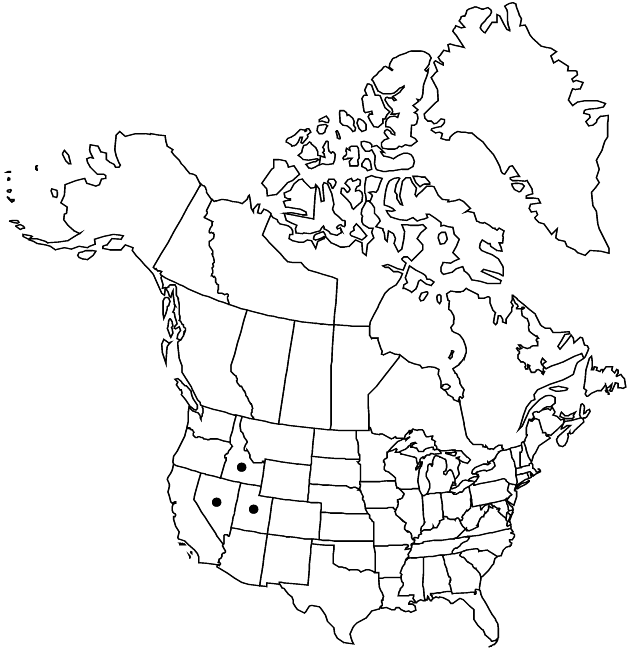Difference between revisions of "Packera malmstenii"
in J. T. Kartesz and C. A. Meacham, Synth. N. Amer. Fl., nomencl. innov. 21. 1999.
FNA>Volume Importer |
FNA>Volume Importer |
Revision as of 18:41, 24 September 2019
Perennials, 8–15+ cm; rhizomatous (rhizomes relatively slender, branched). Stems 1 or 3–5, loosely clustered, glabrous or bases and leaf axils tomentose. Basal leaves (and proximal cauline, relatively thick and turgid) petiolate (petioles sometimes winged); blades elliptic-ovate or suborbiculate to spatulate, 15–25 × 5–20 mm, bases tapering, margins entire or dentate (at apices). Cauline leaves abruptly reduced (becoming sessile, bractlike). Heads 1–2(–4). Peduncles ebracteate, glabrous. Calyculi inconspicuous. Phyllaries 13, cyanic, 8–9 mm, glabrous or loosely tomentose proximally. Ray florets (0) or 8–13; corolla laminae 7–9 mm. Disc florets 35–50+; corolla tubes 2–3 mm, limbs 2.5–3.5 mm. Cypselae 1–2 mm, glabrous; pappi 3–4.5 mm.
Phenology: Flowering mid Jul–early Aug.
Habitat: Steep talus of limestone-derived slopes at or above timberline
Elevation: 2600–3600 m
Distribution

Idaho, Nev., Utah.
Discussion
Of conservation concern.
Packera malmstenii is poorly known; it has obvious affinities with P. werneriifolia in both morphology and habitat preference. Its herbage tends to be thick and turgid.
Selected References
None.